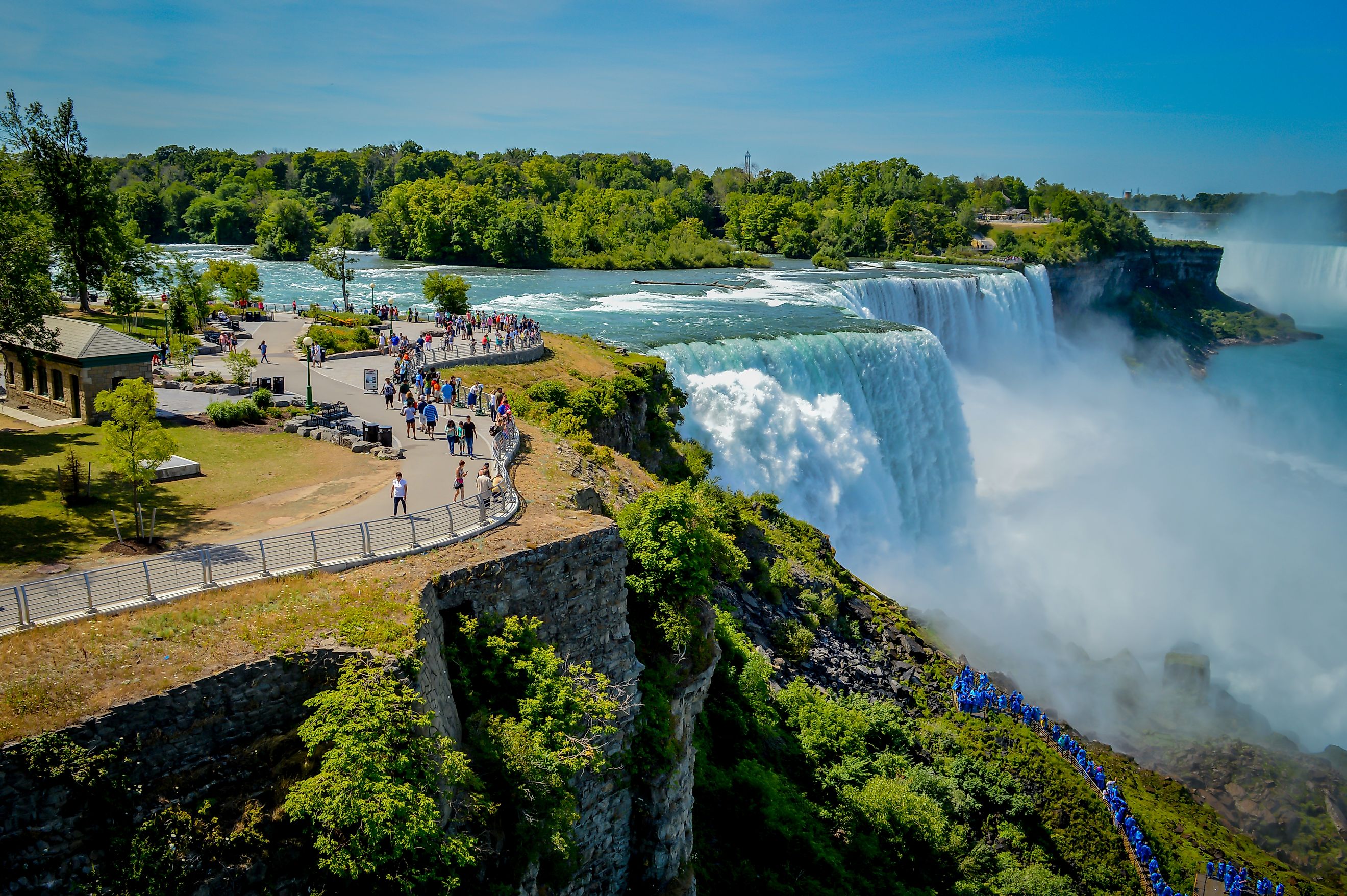
Niagara Falls
Niagara Falls is one of the most iconic natural landmarks in the United States, drawing millions of visitors every year to the border of New York and Canada. The sheer force of the water, the mist rising above the gorge, and the roar that can be heard from blocks away make the falls an unforgettable experience. While both the Canadian and American sides have their share of viewpoints, attractions, and stories, the US side offers its own unique perspective. From Goat Island to the Cave of the Winds, Niagara Falls, New York, is a destination where nature, history, and industry all collide.
This is the story of the American Falls, Bridal Veil Falls, and the US front-row seat to one of the world’s greatest waterfalls.
The Three Falls of Niagara
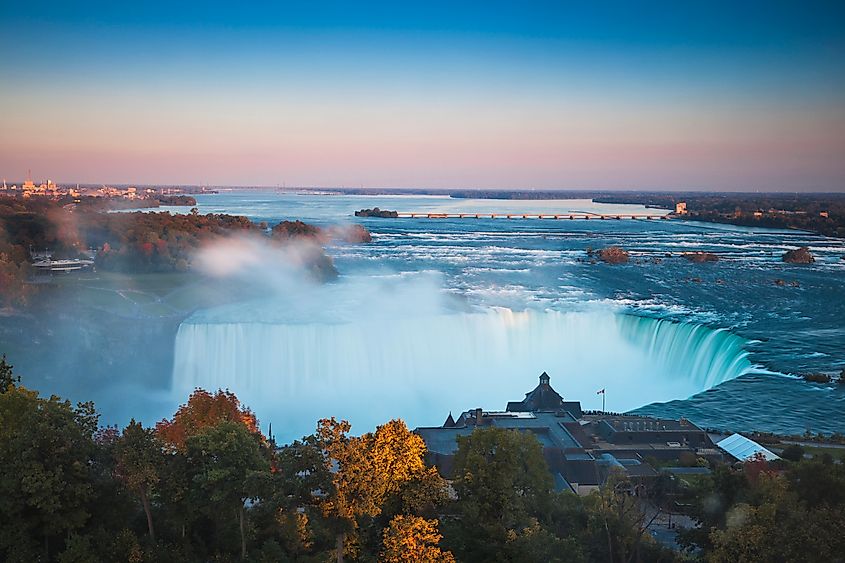
Niagara Falls is not just one waterfall, but three.
-
Horseshoe Falls: The largest and most powerful, straddling the border.
-
American Falls: Entirely within New York state, it measures about 1,050 feet wide.
-
Bridal Veil Falls: The smallest, separated from the American Falls by Luna Island.
Together, they pour water from Lake Erie into Lake Ontario, with a vertical drop of nearly 200 feet. On peak summer days, more than 168,000 cubic meters of water rush over the crest every minute, making Niagara Falls the most powerful waterfall in North America.
Comparing the Falls
| Waterfall | Height | Width | Location |
|---|---|---|---|
| Horseshoe Falls | 187 ft | 2,592 ft | Straddles US and Canada |
| American Falls | 69–98 ft (varies due to boulders) | 1,050 ft | New York, US |
| Bridal Veil Falls | 78 ft | 56 ft | New York, US |
The American Experience
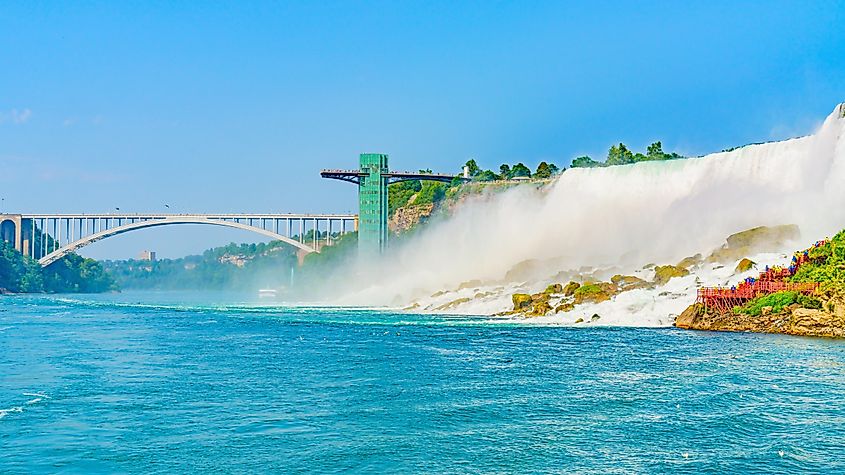
Many first-time visitors assume the best views are on the Canadian side, but the US side offers something different: intimacy. Standing on Goat Island or at Prospect Point, you don’t just look at the falls, you feel them. The spray hits your face, the ground shakes beneath your feet, and you can practically reach out and touch the torrents of water rushing past.
Prospect Point and the Observation Tower
The Observation Tower at Prospect Point is the only place where you can see all three waterfalls at once from the US side. Extending out over the gorge, it provides panoramic views and access to the boarding docks for the iconic Maid of the Mist boat ride.
Goat Island: The Heart of the Falls
Goat Island splits the Niagara River in two, directing the water toward Horseshoe Falls on one side and American Falls and Bridal Veil Falls on the other. Visitors can walk, bike, or take the trolley across Goat Island to experience several scenic points, including:
-
Terrapin Point: Overlooks Horseshoe Falls from the US side.
-
Luna Island: Nestled between American Falls and Bridal Veil Falls.
-
Three Sisters Islands: Small islands connected by footbridges with views of the rapids.
Cave of the Winds: Beneath Bridal Veil Falls
Arguably the most thrilling US attraction, the Cave of the Winds brings you face to face with Bridal Veil Falls. After donning a poncho and special footwear, visitors descend by elevator to wooden walkways built right at the base of the falls. The “Hurricane Deck” lives up to its name, where winds and spray make you feel as if you’ve stepped directly into a storm.
A Force of Nature and Industry
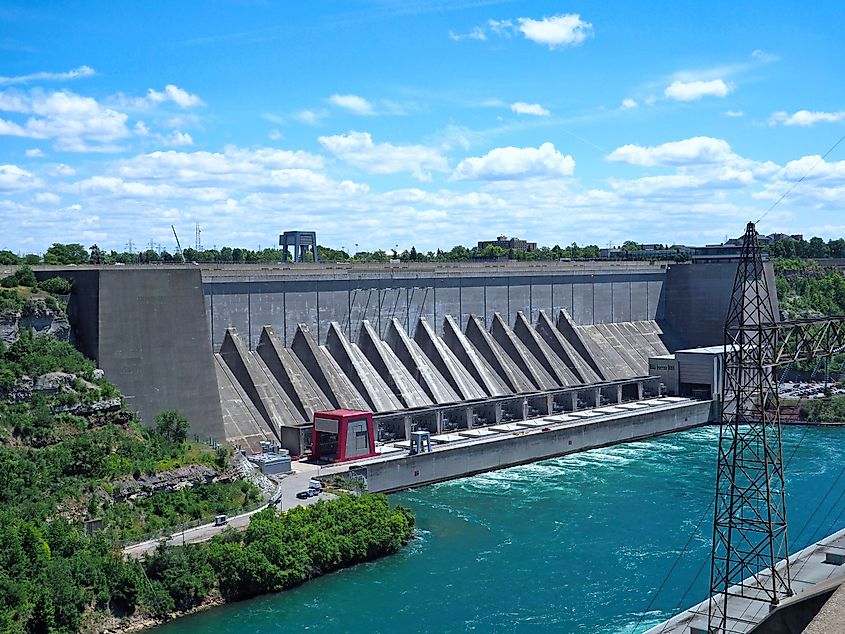
Niagara Falls is not just a natural wonder. It is also one of the greatest sources of hydroelectric power in North America.
-
In 1881, the first hydroelectric generating station was built near the falls, powering local mills and even lighting parts of the village.
-
By 1896, a system designed by Westinghouse Electric was transmitting alternating current from Niagara Falls to Buffalo, 20 miles away.
-
Today, the Robert Moses Niagara Power Plant remains one of the largest producers of electricity in New York State.
To preserve the natural beauty, treaties with Canada regulate how much water can be diverted for power. By day, especially in peak tourist season, more water is allowed to flow over the falls to maintain the spectacle. At night and in winter, water diversion increases to meet energy demands.
The Science Behind the Roar
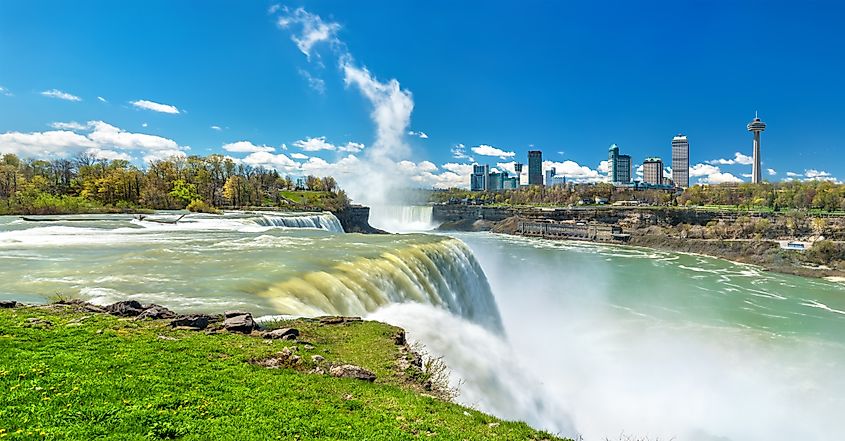
The falls are not static. They were carved about 12,000 years ago during the last Ice Age, when retreating glaciers formed the Great Lakes. As water drained toward the Atlantic, the Niagara River cut into the Niagara Escarpment, creating the gorge we see today.
Erosion continues to shape the falls. In fact, Horseshoe Falls has retreated about 6.8 miles from its original location. Engineers have worked for decades to slow this process, using diversion dams and reinforcement of the rock base. Still, the falls remain a living, changing natural force.
The signature green color of the water is another product of geology. It comes from dissolved minerals (primarily limestone) that are ground into fine rock flour by the force of the river. Nearly 60 tons of dissolved salts and rock particles pass over the falls every minute.
Wildlife Along the Niagara River
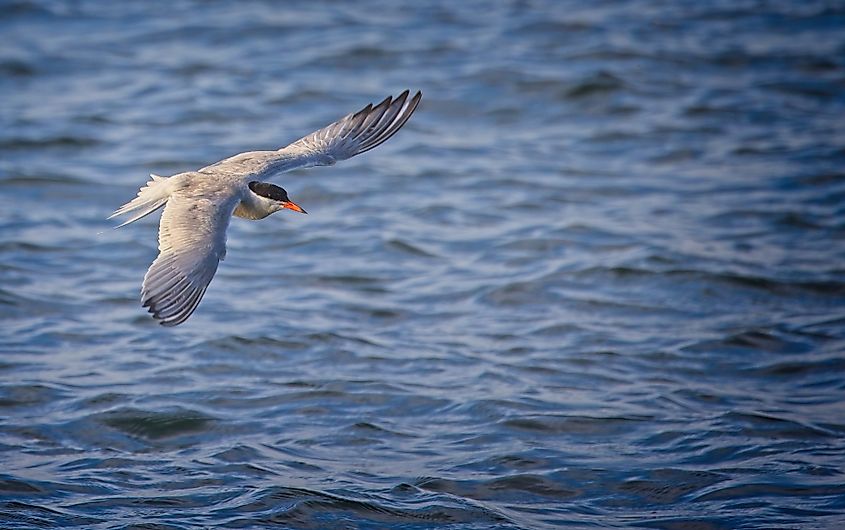
Beyond its human history, the Niagara River supports a thriving ecosystem. It is considered an important bird area, particularly for gulls. Between November and January, as many as 100,000 seagulls gather in the region, making it one of the world’s most impressive gull-watching sites.
Species you might spot include:
-
Bonaparte’s gulls
-
Ring-billed gulls
-
Herring gulls
Because the river rarely freezes completely, it provides a winter refuge for these birds, adding another layer of life to the already vibrant scene.
Visiting Niagara Falls State Park
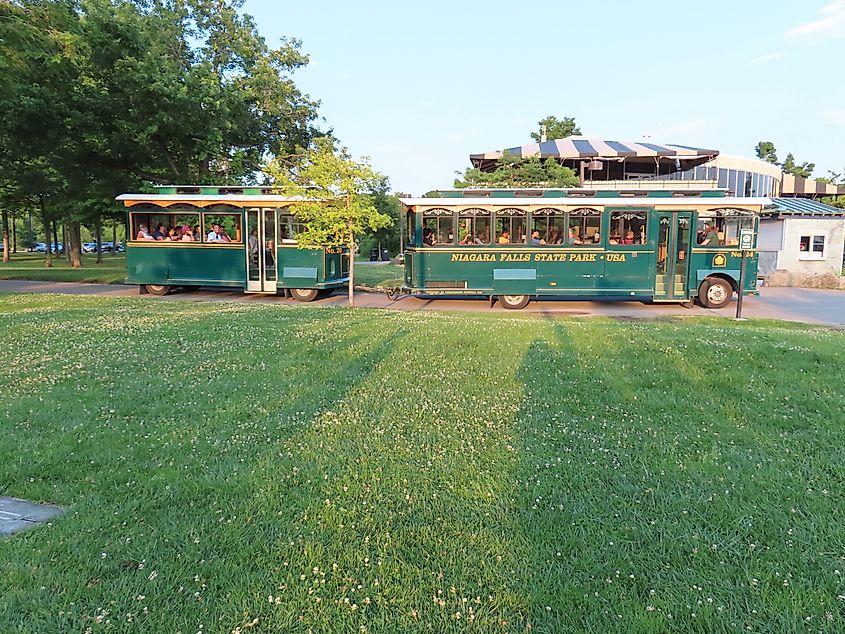
Established in 1885, Niagara Falls State Park is the oldest state park in the United States. Designed with input from famed landscape architect Frederick Law Olmsted, the park ensures that the falls remain accessible to the public.
Highlights include:
-
Niagara Gorge Discovery Center: Exhibits on geology and natural history.
-
Niagara Scenic Trolley: A fun way to tour the park’s main attractions.
-
Walking Trails: Scenic paths lead to overlooks, islands, and the rapids upstream.
The park remains free to enter, with fees only for special attractions like the Cave of the Winds or the Observation Tower.
Beyond the Falls: Niagara, New York

The city of Niagara Falls, New York, has embraced tourism as its lifeblood. Visitors will find restaurants, shops, and the Seneca Niagara Casino & Hotel, a major resort destination built by the Seneca Nation.
For history buffs, the Adams Power Plant Transformer House stands as a National Historic Landmark, celebrating the birthplace of modern hydroelectric power.
For panoramic views, adventurous travelers can also book helicopter tours that provide aerial perspectives of the gorge and waterfalls.
Tips for Your Trip
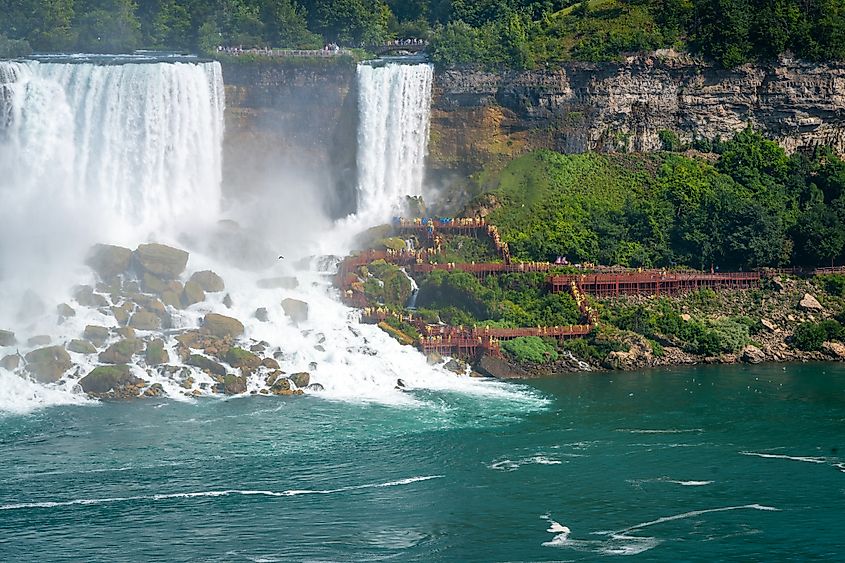
-
Best Time to Visit: Summer offers full water flow, fireworks, and illumination, though winter provides stunning ice formations with fewer crowds.
-
What to Wear: Expect to get wet near the falls. Ponchos are provided for boat rides and the Cave of the Winds.
-
Parking: Several lots are available within Niagara Falls State Park, with a trolley system to move between attractions. Fees apply.
-
Border Crossing: Bring identification if you plan to walk across Rainbow Bridge to view the Canadian side.
A Wonder That Never Grows Old
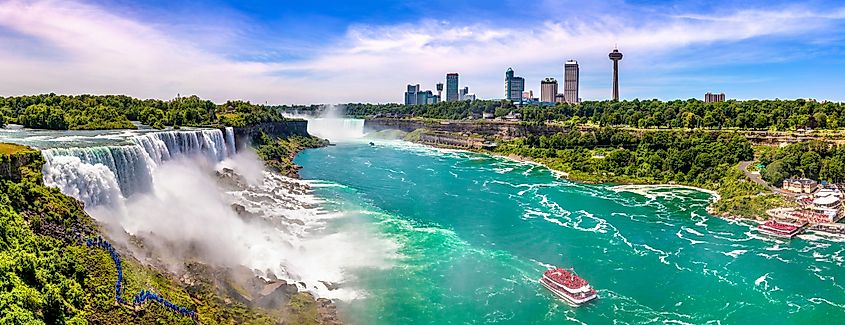
Niagara Falls has captivated people for centuries. Native American nations saw it as a sacred place long before it became a tourist destination. Writers, artists, and travelers from around the world have marveled at its scale and beauty. Today, it continues to draw millions who come to witness its thundering waters firsthand.
Standing at the edge of the American Falls or braving the spray at Cave of the Winds, visitors are reminded that this is not just a waterfall but a living monument to the power of nature. On the US side, you experience the falls not from a distance, but up close, surrounded by the sights, sounds, and force of one of America’s greatest treasures.
Quick Facts: Niagara Falls
| Feature | Details |
|---|---|
| Location | Border of Niagara Falls, New York (USA) and Niagara Falls, Ontario (Canada) |
| Type | Waterfall system on the Niagara River |
| Components | Horseshoe Falls, American Falls, Bridal Veil Falls |
| Height | ~167 feet |
| Width | Horseshoe Falls: 2,700 feet; American Falls: 940 feet |
| Flow Rate | Over 85,000 cubic feet per second (peak summer daytime flow) |
| Formation | Created around 12,000 years ago during the last Ice Age |
| Tourism | Draws ~12 million visitors annually |
| Power Generation | Major source of hydroelectric power for New York and Ontario |
| Protected Areas | Niagara Falls State Park (USA, oldest state park, est. 1885) and Niagara Parks Commission (Canada) |